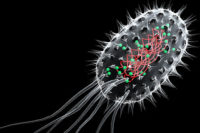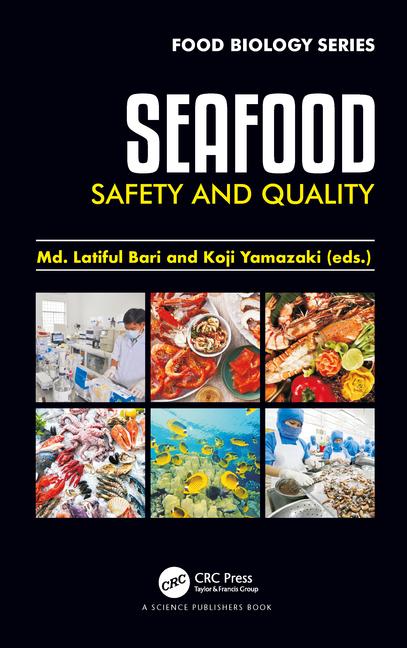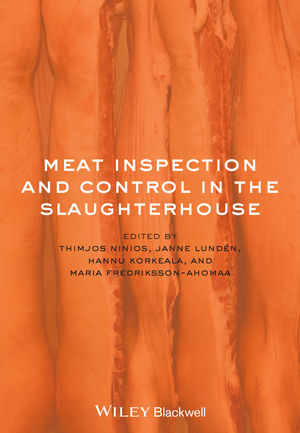Food-safety success strategies: All in a day's work
By Allison Bardic, Senior Editor
From mad-cow disease and avian influenza to E. coli O157:H7 and Listeria monocytogenes, food-safety combatants are ever challenging meat and poultry processors to maintain an aggressive offense.
While last year's bovine spongiform encephalopathy (BSE) discovery and recent cases of avian influenza have brought the safety of the United States' meat and poultry supply under the world's microscope, food safety arguably has always been an important issue. Progressive processors over the years have built on their commitment to ensure the safety of their meat products.
The latest food crises, however, have highlighted the ongoing need for continuous improvement of food-safety tools and procedures, including traceability methods and multiple-hurdle interventions.
"Food safety — in conjunction with employee safety — is our highest priority. Our employee team shares a commitment to food safety that carries through accountability and execution," notes Jim Herlihy, vice president of communications, Swift & Co., Greeley, CO. "We realize that food safety is not a goal to be reached, but it is a process that requires a commitment to continuous improvement — both in process as well as technology."
For its part, Swift & Co., the first beef processor to implement a multiple-hurdle intervention process, most recently launched cold-carcass sanitation and hide washing/sanitation, as well as its Swift Trace™ animal identification/traceability process.
The initial phase of Swift Trace™, first introduced to international customers, gives Swift & Co. the ability to trace boxed beef back through the entire production process, from the feedlot to finished boxed beef.
The second phase of the traceability program extends the tracking process back to the individual animal. Working with a Fort Collins, CO-based manufacturer of retinal imaging livestock identification and tracking systems, Swift & Co. has tested a system that scans both the animal's retina and ear tag to record it in a database. Global Positioning Satellite (GPS) information automatically is encrypted with each animal's image collected.
"Not only will the expanded Swift Trace™ system give us the ability to trace from individual animal
to boxed beef, but it is naturally expandable back to the producer and forward to the consumer," explains Warren Mirtsching, vice president of food safety and quality assurance, Swift & Co. "This is a platform on which all U.S. livestock traceability systems can be built."
to boxed beef, but it is naturally expandable back to the producer and forward to the consumer," explains Warren Mirtsching, vice president of food safety and quality assurance, Swift & Co. "This is a platform on which all U.S. livestock traceability systems can be built."
In addition, Swift & Co. last year implemented a revolutionary double pasteurization process, which uses a 160Þ F water spray at two separate times in the production process to virtually sterilize the carcass. "Our double-pasteurization process is notable for two reasons. First we are the only major processor who has implemented it, and second, because it takes a proven technology and expands to maximize its effectiveness," says Herlihy.
Another food-safety pioneer, Kansas City, MO-based National Beef Packing Co. LLC stresses that its entire company, from upper management to hourly workers, has readily embraced the concept of food safety.
"Food safety has become a part of our company's culture," observes Russell Cross, vice president of food safety/government & industry affairs, National Beef. "Along with this food-safety mentality comes the desire and drive to continue to improve on what we have. National Beef is never satisfied with the status quos, and it is driven to look at new interventions in food safety as well as dissecting and improving what we currently have in place."
Unique to National Beef is its BioLogic program, a process in which the company examines its entire process in a scientific manner by testing the current process, evaluating the results, making changes to the process (either physical, program, or process), then measuring it again to evaluate progress. "We have discovered using this process that in some areas where we thought we were very good that we could indeed improve," says Brenden McCullough, vice president of technical services, National Beef. "There will always be room for improvement."
Demonstrating National Beef's commitment to continuous improvement is its use of activated lactoferrin on all of its beef carcasses. The process uses a patented formulation of lactoferrin to detach and remove microorganisms on the slaughter floor. By discovering how to activate the lactoferrin (a natural protein found in dairy products) molecule, scientists have been able to mimic its bacteria-fighting properties on the surface of beef.
"[The lactoferrin technology] is an addition to our arsenal that we use in our war on pathogens," stresses McCullough. "We continue to look for food-safety applications for (the technology) as well as new technology as it becomes available."
Greater Omaha Packing Co. Inc., Omaha, NE, also emphasizes the importance of multiple-hurdle decontamination treatments and intervention systems verified by in-plant validation studies that prove their microbiological effectiveness. "It is not just one intervention in your food-safety protocol that reduces the risk of pathogens being transmitted from cattle to the consumer, but every single step in the process that controls the risk," says Kathleen Krantz, technical resource director, Greater Omaha Packing.
In fact, Greater Omaha Packing's brochure notes that the company employs a multi-hurdle concept of 12 separate processes, each of which is a proven pathogen reduction procedure. "We have gone to great lengths to research the industry for the newest and most effective methods of removing and controlling pathogens," the brochure notes. "These steps include controlled atmosphere, steam vacuums, hot water and acid rinse cabinets, and pasteurization cabinets. The industry views all of these methods as viable steps. Used in multiple-hurdle configurations, they are extremely effective. We are confident that Greater Omaha can deliver to you and your customer the cleanest, safest beef you can buy anywhere."
Greater Omaha Packing stresses, however, that its system is most effective when used in combination with good hygienic practices throughout processing and preparation for consumption. "Decontamination treatments can prove useful in reducing contamination provided that processing and preparation for consumption are performed using good hygiene practices in every step of
the food chain," says Krantz. "Appropriate implementation of decontamination strategies should lead to consistently safe, wholesome products for consumption following adequate cooking."
the food chain," says Krantz. "Appropriate implementation of decontamination strategies should lead to consistently safe, wholesome products for consumption following adequate cooking."
Most recently, Greater Omaha Packing has constructed additional hot boxes and cooler capacity to facilitate reduction of pathogen growth during the carcass chill process. "The cold-chain management process is critical in controlling pathogens and has been a quantum leap in implementation of advancement of food safety," the company insists.
In processed meats, Fresh Mark Inc., Canton, OH, recently augmented its pathogen reduction program with a Murray Hill, NJ-based company's ozone technology to control Listeria and other pathogens. The two ozone systems, which include an on-site generator that produces ozone from ambient air, dissolves it in the plant's process water, and disperses it through a spray system directly onto unpeeled wieners and some food-processing equipment such as slicing logs.
And Plumrose USA, an East Brunswick, NJ-based processor of premium sliced meats, bacon, and deli hams, has embraced a Canadian company's revolutionary food pathogen detection system in its Booneville, MS, facility. Under the terms of the agreement, Plumrose will purchase the technology and equipment to detect the presence of Salmonella and Listeria in its products.
"Much of our success over the years has been built on the strength of our reputation for providing products of consistently unsurpassed quality," says Mike Rozzanno, general manager, Plumrose USA. "One of the ways we continue to earn this respect is by fostering a spirit of innovation, especially in the area of superior methods of quality assurance. We are excited about the competitive advantages that [this technology] brings to our company."
Plumrose's pathogen detection system uses advanced DNA detection technology to rapidly and easily determine the presence of pathogen bacteria in a given food sample, and it is said to represent a significant improvement over traditional microbiology tests that currently require five to seven days to results. Plumrose, the first food manufacturer in the United States to adopt the system, anticipates this reduced time to results will enhance its quality control systems by enabling the company to test more often in the production process.
In yet another new innovative effort to control pathogens, Alexandria, MN-based Rosen Meat Group last fall adopted a Sebastian, FL-based technology company's food-safety device at its four U.S. meat processing plants. The lightweight and portable machine-vision system instantly detects microscopic traces of organic contamination that might harbor bacteria such as E. coli O157:H7, Salmonella, and others. About the size and weight of a video camera, the handheld device displays surface contamination at a glance, and can be used in meat-processing, distribution, and grocery environments to help workers zero-in on organic contamination.
"The [system] enhances our food-safety program by providing an objective and consistent quality inspection tool, which our employees can use to ensure that we are doing the best job possible," explains Vincent DeGrado, corporate director of technical services, Rosen Meat Group. "[It] allows us to identify organic contamination on meat surfaces easily at a glance, even contamination that would otherwise be invisible to the human eye."





Report Abusive Comment